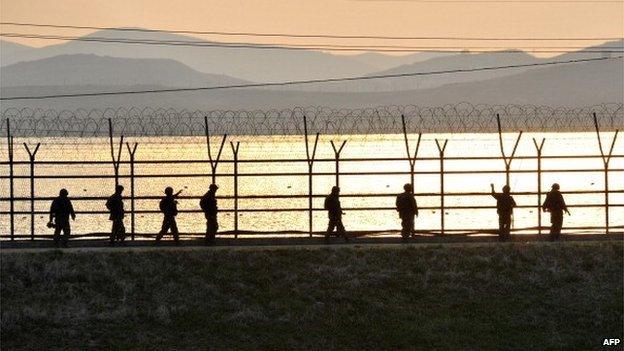The Korean War armistice
- Published

The two Koreas remain technically at war, after the 1950-1953 conflict
The 1950-53 Korean War ended in an armistice, with neither side able to claim outright victory.
Decades on, the truce is still all that technically prevents North Korea and the US - along with its ally South Korea - resuming the war, as no peace treaty has ever been signed.
Both sides regularly accuse the other of violating the agreement, but the accusations have become more frequent as tensions rise over North Korea's nuclear programme.
When the armistice was signed on 27 July 1953, talks had already dragged on for two years, ensnared in testy issues such as the exchange of prisoners of war and the location of a demarcation line.
Military commanders from China and North Korea signed the agreement on one side, with the US-led United Nations Command signing on behalf of the international community. South Korea was not a signatory.
The armistice was only ever intended as a temporary measure.

The document, signed by US Lt Gen William K Harrison and his counterpart from the North's army, General Nam Il, said it was aimed at a ceasefire "until a final peaceful settlement is achieved".
However that settlement never came, and a conference in Geneva in 1954 which was designed to thrash out a formal peace accord ended without agreement.
Ceasefire
The armistice is still the only safeguard for peace on the Korean peninsula.
The agreement provided for:
A suspension of open hostilities
A fixed demarcation line with a 4km (2.4 miles) buffer zone - the so-called demilitarisation zone
A mechanism for the transfer of prisoners of war
Both sides pledged not to "execute any hostile act within, from, or against the demilitarised zone", or enter areas under control of the other.
The agreement also called for the establishment of the Military Armistice Commission (MAC) and other agencies to ensure the truce held.
The MAC, which comprises members from both sides, still meets regularly in the truce village of Panmunjom.
Despite the relative peace since the war ended, tensions remain high between the two Koreas, and their border remains the most heavily militarised frontier in the world.